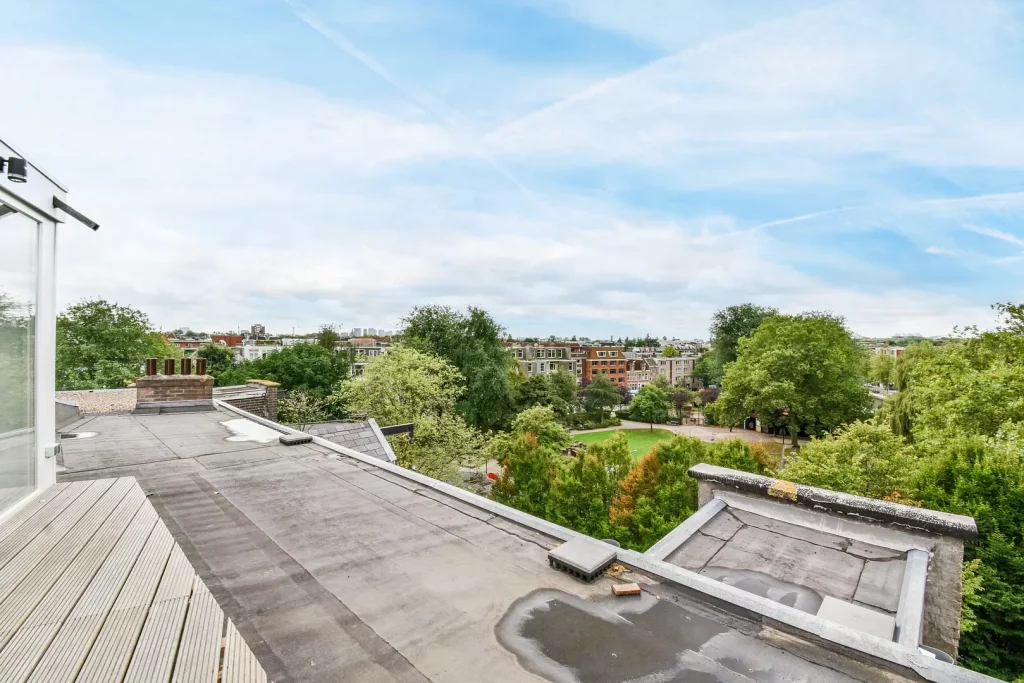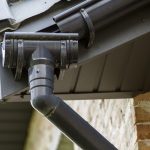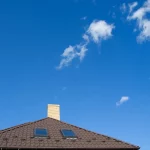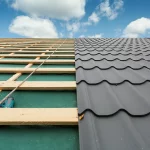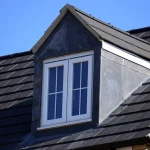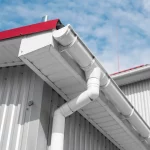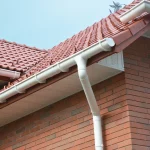Unveiling the Elegance of Flat Roofing in Canterbury
Canterbury, an antiquated city in southeastern England, has long been renowned for its rich architectural heritage. One aspect of this heritage that often goes unnoticed is the city’s plentiful flat roofing. A blend of tradition and modernity, flat roofing in Canterbury both complements and enhances the city’s architectural charm. Its minimalistic beauty contributes remarkably to the city’s aesthetic appeal, offering a sleek and seamless silhouette against the sky.
Flat roofing is not just about simplicity and elegance; it is a design feature that is versatile and adaptable. Whether on a commercial building, a residential home, or a historic edifice, flat roofing meets various architectural needs and styles without sacrificing its inherent beauty. The flat surface enables unique design opportunities such as green rooftops, rooftop patios, or solar panel installations, further enhancing the city’s beauty.
Flat roofing also offers an advantage in terms of maximising space. Unlike sloping roofs, which can render attic space unusable, flat roofing provides additional usable space, whether for storage, living, or recreational purposes. This optimal use of space is a testament to the intelligent design and practicality that underpins the elegance of Canterbury’s flat roofs.
A Closer Look at Canterbury’s Flat Roofing Marvels
Canterbury’s flat roofs reveal a fascinating blend of architectural styles. From the flat roofs adorning the city’s medieval structures to the modern, eco-friendly green roofs installed atop commercial buildings, each structure tells a unique story. Flat roofs are particularly common on commercial buildings, where they are appreciated for their low-cost maintenance, ease of installation, and durability.
One noteworthy example of flat roofing in Canterbury is the University of Kent’s Sibson Building. This modern architectural marvel showcases a sedum green roof that not only enhances the structure’s aesthetic appeal but also provides excellent insulation and promotes biodiversity. Other striking examples of flat roofing can be found adorning the city’s numerous historic buildings, blending seamlessly with the architectural styles of different epochs.
Whether spotted on a modern building or a historic structure, flat roofs in Canterbury stand as a testament to the city’s rich architectural diversity and heritage. They embody a harmonious blend of functionality and design, reflecting a city that respects its past while embracing the future.
Efficiency and Functionality of Flat Roofs in Canterbury
Flat roofs are not just aesthetically pleasing; they also offer several functional advantages. Perhaps the most significant benefit is their cost-effectiveness. Flat roofs have fewer materials and are easier to install than sloping roofs, resulting in lower initial costs. Moreover, their maintenance and repair costs tend to be lower, contributing to their overall cost-effectiveness.
Another significant advantage of flat roofs is their durability. Many flat roofing materials, such as EPDM (ethylene propylene diene terpolymer) and TPO (thermoplastic olefin), are known for their remarkable longevity and resistance to weathering. These attributes make flat roofs a reliable and long-lasting roofing solution, particularly suitable for Canterbury’s varying weather conditions.
Last but not least, flat roofs offer excellent energy efficiency. Their flat surface is ideal for installing solar panels, while the possibility of a green roof can further enhance insulation and reduce heat loss. These energy-saving features not only cut down on electricity bills but also contribute to a sustainable and eco-conscious lifestyle.
Decoding the Popularity of Flat Roofing in Canterbury
The popularity of flat roofing in Canterbury can be attributed to several factors. The low initial cost, ease of maintenance, and durability make it a cost-effective choice for many homeowners and developers. Its energy-efficient nature and suitability for solar panel installations also appeal to the city’s eco-conscious mindset.
Moreover, the flexibility of design that flat roofs offer is another factor driving their popularity. From roof gardens and outdoor living spaces to added storage areas, flat roofs provide a range of design possibilities that sloped roofs do not. This versatility, coupled with the unique aesthetic appeal, makes flat roofing an attractive choice for a wide variety of buildings in Canterbury.
The compatibility of flat roofs with Canterbury’s varied architectural styles is another factor contributing to their popularity. Whether on a historic building or a modern edifice, flat roofs blend beautifully while enhancing the city’s architectural landscapes. Their ability to harmonise with and contribute to the city’s architectural heritage has undoubtedly played a part in their widespread acceptance and use.
Flat Roofing: A Testament to Canterbury’s Architectural Heritage
Canterbury’s architectural heritage is a rich tapestry of styles and periods, and flat roofing plays a significant part in this narrative. Its prominence in the city’s skyline is a reflection of its historical and ongoing relevance. The flat roofs adorning the city’s historic buildings bear witness to Canterbury’s past, while those on modern structures hint at the city’s future.
The adaptability of flat roofing to different architectural styles is a testament to its timeless appeal. Its ability to blend seamlessly with different building styles, from medieval structures to contemporary designs, reflects its versatility and enduring relevance. Thus, flat roofing is not only a part of Canterbury’s architectural history but also a cornerstone of its contemporary and future architecture.
Flat roofing’s contribution to Canterbury’s architectural heritage goes beyond aesthetics. Its functional benefits, such as cost-effectiveness, energy efficiency, and versatility, reflect the city’s commitment to practical and sustainable design. Ultimately, flat roofing embodies Canterbury’s architectural ethos, which values both form and function, history and innovation.
Environmental Impact of Flat Roofing in Canterbury
Flat roofing in Canterbury has significant environmental implications. The opportunity to install green roofs, also known as living roofs, is one of the most significant environmental benefits. Green roofs feature vegetation and soil, which help to reduce heat islands, improve air quality, and promote biodiversity. They also provide excellent insulation, reducing the need for artificial heating or cooling and thereby decreasing energy consumption and emissions.
Additionally, the flat surface of these roofs is ideal for the installation of solar panels. This promotes the use of renewable energy and reduces reliance on fossil fuels, contributing to a lower carbon footprint. The durability and longevity of many flat roofing materials also mean less frequent replacements, reducing waste and conserving resources.
Furthermore, many modern flat roofing materials are recyclable or made from recycled materials, emphasising the commitment to sustainability. Collectively, these environmental advantages make flat roofing an eco-friendly choice, aligning with Canterbury’s goals for sustainable development and environmental stewardship.
Cost-Efficiency of Flat Roofing in Canterbury
Flat roofing is an economically smart choice for many property owners in Canterbury. The initial installation is typically less expensive than sloping roofs, due to fewer materials and simpler installation procedures. This makes flat roofs a cost-effective solution, especially for larger commercial buildings.
Maintenance and repair costs for flat roofs are also typically lower. Their accessible surface makes tasks like gutter cleaning, inspection, and minor repairs quicker and safer, resulting in lower maintenance costs. Moreover, the longevity and durability of flat roofing materials mean less frequent replacements, further contributing to cost savings over the roof’s lifespan.
Lastly, the energy efficiency of flat roofs can lead to substantial savings on heating and cooling costs. Whether through the insulating properties of a green roof or the renewable energy generated by solar panels, flat roofs can significantly reduce energy usage and associated costs. This combination of initial, maintenance, and operational cost savings makes flat roofing an economically wise choice in Canterbury.
The Future of Flat Roofing in Canterbury
Looking ahead, the future of flat roofing in Canterbury appears promising. As awareness of sustainable design and energy efficiency grows, so does the appeal of flat roofing. Its compatibility with green roofs and solar panels aligns with the trend towards more sustainable and environmentally friendly building practices. Moreover, advances in roofing materials and technologies promise even better performance and longevity, enhancing the value proposition of flat roofs.
The versatility of flat roofing also bodes well for its future. As architectural styles evolve and new building purposes emerge, flat roofs provide the flexibility to meet these changing needs. Whether it’s creating rooftop gardens, installing solar farms, or simply maximising usable space, flat roofing offers a wealth of possibilities.
Ultimately, the future of flat roofing in Canterbury will be shaped by the city’s commitment to sustainable development, architectural innovation, and preservation of its rich architectural heritage. Given the many advantages of flat roofing, it is likely to remain a key feature of Canterbury’s architectural landscape for years to come.


